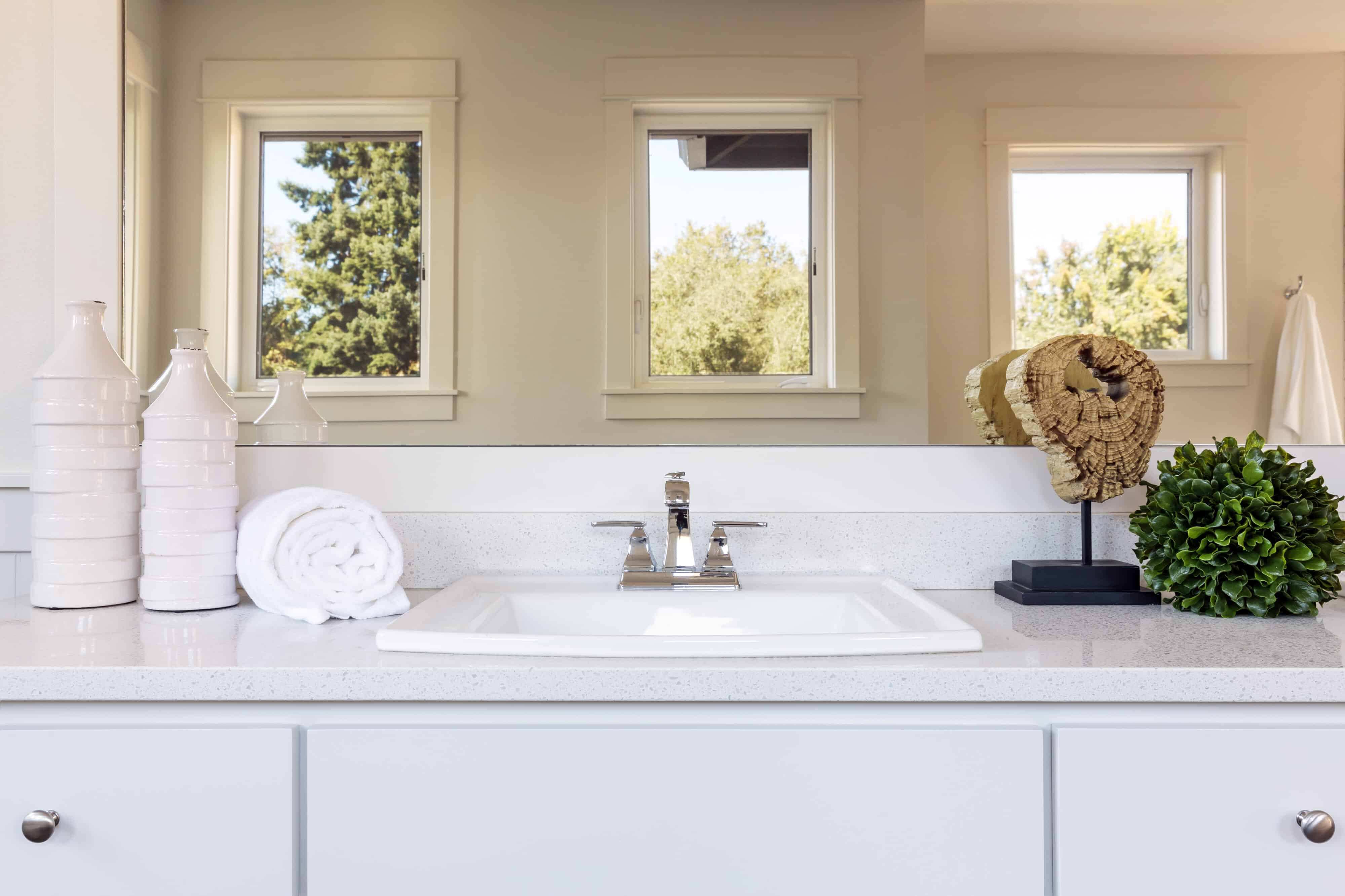How Much Does it Cost to Add a Bathroom?

There’s a common phrase in real estate – “kitchens and bathrooms sell homes.” These two rooms are where you can add the most potential value to a home and increase the functionality of your home today and for current and future residents. But, adding a bathroom to your home can also be an expensive project that many homeowners are hesitant to tackle due to the costs and disruption of living situations.
If you’re thinking of adding a bathroom to your home but need financing to complete it, Acorn Finance can help. With our easy-to-use platform, you can get pre-qualified for a home improvement loan and review offers in one place to help make your bathroom addition flush through from dream to reality.
Is adding a bathroom worth the cost?
Whether your family is fighting over one bathroom or you’re looking to increase the value of your home, adding a bathroom can be a great home improvement project. Depending on your home’s layout and structural integrity, adding a bathroom can greatly improve your home’s livability and help add value in the process. When you bring financing into the situation it can increase project costs, but this does not mean the cost of adding a bathroom is no longer worth it.
Keep reading to learn more about the costs of adding a bathroom, potential returns, and bathroom addition financing options.
How much does it cost to add an additional bathroom?
The cost to add a bathroom really depends on your current home’s layout and structure, how big of a bathroom you want to add, and the type of finishes you plan to add. Because of the wide range of factors involved, you can expect to spend anywhere from $9,000 up to $74,000 or more.
The main difference here is using an already existing space versus adding an addition to your house to make a new bathroom. Adding a bathroom to spaces like a laundry room, garage, or basement is usually on the lower end of the price since there are usually existing plumbing lines nearby. Adding a bathroom addition or converting one from a bedroom or attic can cost more.
This doesn’t factor in various features and finishes like a walk-in shower, a soaking tub, cabinets and vanities, which all are factored into the cost of adding a bathroom. To truly determine the cost of your project, gather a few estimates and define the scope of the project. In the event you need financing, knowing how much the bathroom addition might cost will help you find the right loan, faster.
Does an additional bathroom increase home value?
Yes, it can. Adding a midrange bathroom can get you over 50% return on investment. That means that if you spend around $50,000 to add a bathroom, you can expect to get an additional value boost of about $25,000 to your home. Consider the functionality the extra bathroom adds to your living space. This can help you quantify how valuable it might be for potential borrowers.
What are the pros and cons of bathroom addition costs?
Adding a bathroom to your home can be a high-ROI home improvement project that can benefit you in the short or long run. As you consider a bathroom addition to your home, here are some of the main pros and cons:
Pros
- You’ll improve your home’s privacy: If you’re tired of cramming several people into one bathroom, adding an extra bathroom to your home can increase the space you have and give extra privacy to your family and guests.
- You’ll likely add value to your home: Most of the time, adding a bathroom to your house adds value. Whether you’re looking to sell soon or hoping to increase your equity in the home, this can be a financial benefit for many homeowners.
- You can use the space in your home more efficiently: Whether you’re building a new bathroom addition or repurposing space that is not in use, a bathroom is a heavily trafficked room in any house so it’ll likely get plenty of use. Plus, adding or remodeling a bathroom offers the opportunity to make energy-efficient upgrades. A win all around.
Cons
- The cost can be more than most homeowners can afford: Adding a bathroom is one of the most expensive home improvement projects. While it does net a high ROI, many homeowners don’t have $40,000 or more in cash to pay out of pocket for a new bathroom. (hint: use a home improvement loan)
- The project can be disruptive: It can take two to four weeks, or longer, to add a new bathroom to your home. During that time, homeowners have to navigate their homes being under construction which can be disruptive to many.
- Added utility costs: When you add another bathroom to your home, you can expect your utility costs to increase with the new addition. Water, electricity and gas bills can increase with added usage, which is something to consider when factoring in the affordability of a new bathroom.
If the pros outweigh the cons and a bathroom is an important addition for your family, but you’re not sure how to afford it, Acorn Finance can help. With our network of national lending partners, you can access competitive home improvement loan offers with APRs as low as 4.49%, depending on credit score. Checking offers at Acorn Finance won’t send your credit score down the drain either since there’s no credit impact or commitment for harmlessly checking offers.
What are the different costs associated with adding a bathroom?
Keep in mind that aside from the actual construction of the bathroom, you’ll also have to pay for the finishes and fixtures that go in the bathroom after completion. These include things like floors, lighting, toilets and sinks, cabinets, showers and bathtubs. If you’re wondering how much these bathroom addition fixtures cost, here are some general prices and ranges you can expect.
- Flooring: If you opt for high-end floorings like natural stone or marble, you can expect to pay $15-20 per square foot. A more affordable option is laminate, with some costing between $2 and $5.
- Cabinets and counters: As you pick your vanity and cabinets, you’ll also have to select a countertop since they’re often sold separately. These can range from as little as $450 for lower-grade materials, or go up to $2,000 for higher-end finishes.
- Showers: Showers are often one of the main focal points of a bathroom. Prices can really range depending on the complexity of the design and features you opt for. You can expect to pay between $1,500 for a standard option and up to $6,000 for a nicer, walk-in shower.
- Bathtub: Depending on your chosen bathtub style and size, it can cost between $3,000 and $6,000 to install a new bathtub in your bathroom. Keep in mind the size of your bathroom space and ensure you have enough room to function if you install a bathtub, since they’re large features!
How much does it cost to build a half bathroom?
If you’re looking to add a half bathroom to an already existing space, you can expect to spend between $5,000 and $15,000 on average. If you don’t have an existing space, you could spend upwards of $35,000 to add a new half bathroom addition to your home.
Does a half bathroom add value?
Adding a half bathroom to your home may not net as much value as a new full bathroom. On average, a half bath can increase your home’s overall value by 10%. With that being said it can still be a valuable home improvement project.
Deciding to add a bathroom to your home can be a great reason to use a home improvement loan. With Acorn Finance, you can spend more time and energy focusing on your new bathroom and less time worrying about how to find financing that works. Hear us out, all you need is 60 seconds or less to generate competitive home improvement loan offers. No credit impact. No commitment. Explore the offers and choose the one that works best for you. Once you do so, work with one of our top national lending partners to complete the process.
